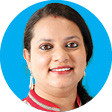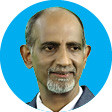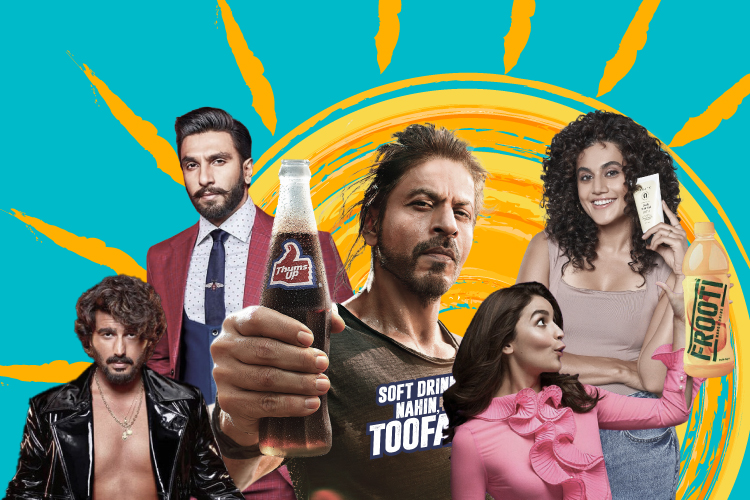Have you seen Coca-Cola’s latest ‘Thanda’ campaign wherein actor Ishaan Khattar, drained from the heat, boards a ladies special bus and realizes it only after having a sip of chilled Coca-Cola?
Not just Coca-Cola, a huge number of brands have come up with innovative campaigns this summer. In terms of business opportunity, the summer this year has been entirely different from that of 2020 and 2021, when the Covid-19 pandemic played spoilsport. Unlike the previous two years, this year the markets are open and people have the option of going around and shopping, travelling to their hometowns, visiting the hill-stations etc. like they would do in the pre-pandemic world, triggering a trend of revenge spending. While the scenario has turned somewhat normal now, the two years of the pandemic brought about a lot of changes in the world of marketing and advertisement. It expedited the process of digitalization and also redefined almost all parameters. Getting adapted to changes, most brands this year, have bounced back with robust marketing plans. According to the industry leaders, the marketing spends of this summer are expected to grow by 15-20%.
 Saurabh Jain, Managing Partner – South, Havas Media India, says, “2020 was a year when advertising spends were at its lowest. In comparison, the summer advertising spends grew by close to 50% in 2021. The growth continues in 2022 and is expected to further increase by 15-20% over the last summer.”
Saurabh Jain, Managing Partner – South, Havas Media India, says, “2020 was a year when advertising spends were at its lowest. In comparison, the summer advertising spends grew by close to 50% in 2021. The growth continues in 2022 and is expected to further increase by 15-20% over the last summer.”

The Indian Premier League (IPL), the highest rated sports event in the country, has also become one of the major drivers of spends during the summer season. Mansi Datta, Chief Client Officer & Office Head – North & East, Wavemaker India, says, “IPL is back to its original schedule (April -May) after a gap of two years, which is the apt time for brands focusing on summer advertising. That constitutes 8-10% of TV AdEx. We have learnt that 70-odd new brands and 11 new categories are there on their list. So this gives a good indication of where the market is heading.”
 This year, several brands are getting assertive with their marketing campaigns like never before. Nadia Chauhan, Joint Managing Director & CMO, Parle Agro, says, “This summer, we’ve allocated INR 200 crores for an aggressive marketing and advertising strategy. It’s the first time we’ve rolled out four high-octane campaigns for each of our key brands - Frooti, Appy Fizz, B Fizz and our recently launched dairy beverage called Smoodh (a flavoured milk drink). We have launched multi-channel campaigns for these key brands that are being amplified across TV, Outdoor, Digital, and OTT platforms. During summer last year, we had only two campaigns - one for Frooti, and another combined campaign for Appy Fizz and B Fizz.”
This year, several brands are getting assertive with their marketing campaigns like never before. Nadia Chauhan, Joint Managing Director & CMO, Parle Agro, says, “This summer, we’ve allocated INR 200 crores for an aggressive marketing and advertising strategy. It’s the first time we’ve rolled out four high-octane campaigns for each of our key brands - Frooti, Appy Fizz, B Fizz and our recently launched dairy beverage called Smoodh (a flavoured milk drink). We have launched multi-channel campaigns for these key brands that are being amplified across TV, Outdoor, Digital, and OTT platforms. During summer last year, we had only two campaigns - one for Frooti, and another combined campaign for Appy Fizz and B Fizz.”
During the pandemic, the brand quickly adapted to the situation and redesigned their approach to service their retailers. “We grew at about 14 percent in 2021 over 2019 in volume and about 47 percent when compared to 2020. This year, we’ve added almost 800 people to our sales team to ensure that our entire customer base is being serviced effectively. We have a distribution network of over 2 million stores and our aim is to grow that by 20% year on year,” she says.
This year, Coca-Cola has launched a total of nine campaigns across their diverse brand portfolio. Tish Condeno, Senior Director, Sparkling Flavors Category, Coca-Cola India and Southwest Asia, says, “Our brand campaigns launched in the first quarter of 2022 span across Thums Up, Maaza, Sprite, Fanta, Kinley, RimZim as well as brand Coke. In fact, we have even launched three new product innovations – Coca-Cola Zero Sugar, Maaza Aam Panna, and Fanta Apple Delite. We are trying to reach the consumers through integrated marketing efforts focused on creative, out-of-the-box storytelling and unique experiences.”
“India is currently the fifth largest market for Coca-Cola in the world, soon it’s going to be the third-largest. In the fourth quarter of 2021, Coca-Cola India saw a notable increase in market share, nearly 30% growth in transactions and triple-figure growth in e-commerce sales over 2020,” she says.

While the beverage industry saw a sharp drop during the first wave of the pandemic, the summer of 2021, however, ensured a good recovery despite the second wave. Mayank Kumar, Marketing Head, Foods, Dabur India Ltd. says, “Last year, Real grew ahead of the category and gained market share through the year becoming the 3rd largest brand in the large fruit-based beverage sector in India, while maintaining its leadership in Juices and Nectar category. We are now looking at significantly scaling up our distribution by entering into new categories and price points which have much higher distribution reach as compared to Juices and Nectar. This include higher focus on smaller towns and rural areas while also focusing on the drinks-strong markets.”
For achieving their targets several brands are focusing on micro-marketing while increasing their presence on online platforms. Anjana Ghosh, Director, Marketing & Business Development, Bisleri, says, “We have continued with our 360 degree pan India campaign for Bisleri. We have also launched a new campaign for our Himalayan spring water brand Vedica. We are focusing a lot on the varied properties on digital and OTT, beyond social media, Youtube and search engine. Having realized the potential e-platforms we launched Bisleri@Doorstep (our own e-commerce platform) in the midst of the lockdown. For our e-commerce, we are also using micro marketing strategy complemented by precision marketing on digital and hyper targeted visibility via OOH.”

Strong consumer-insights led communications have also been prioritized by some brands. Somasree Bose Awasthi, CMO, Godrej Consumer Products Limited, says, “Most of our campaigns will be new this summer. On Cinthol, we have a new campaign with our ‘Alive is Awesome’ theme which explores high level of energy. Likewise, we will also have fresh campaigns for Godrej Aer Matic and Aer Pocket. We have also re-looked at the price points on certain formats. For example, in Godrej Expert Rich Cream Hair Colour, we realized that people do not need a pack of Rs 30, especially when they get grey hair for the first time. So, we are launching a smaller pack of Rs 15. Thus, we are making some of this formats much more attainable and accessible across channels, particularly in rural areas.”

According to the industry experts, after the pandemic, digital marketing is playing a vital role for all brands. Kaushal Agrawal, VP, Client Operations, Merkle Sokrati, says, “Digital marketing has proved to be the most resilient for e-Commerce, witnessing a massive 90% higher marketing spends in 2021, over the first year of the pandemic. Basis the current projections, this year’s spends are expected to grow by 30% over the last year. In the last two years, several digital transformation projects have enabled many legacy consumer goods brands to go direct-to-consumer (D2C). The capabilities to enable the D2C shift were imperative in continuing to deliver results through digital media, even during the peak of lockdown.”
 Krishna Raman – Business Head for Consumer Products, Bajaj Electricals Limited, says, “We have seen a surge on our website along with other leading e-commerce platforms. We are aggressively using this channel to drive and win sales communications. This summer, we have launched two key multimedia campaigns for each of the focus categories – fans and air coolers with higher off take. For example, in the air coolers category, we have launched ‘Cools like ice, looks so nice’ campaign which demonstrates how easy it is to get a feel of cold places from the comfort of your home with Bajaj Air Coolers during boiling summers. We have also released our latest campaign on fans - Fan Nahin Fantastic.”
Krishna Raman – Business Head for Consumer Products, Bajaj Electricals Limited, says, “We have seen a surge on our website along with other leading e-commerce platforms. We are aggressively using this channel to drive and win sales communications. This summer, we have launched two key multimedia campaigns for each of the focus categories – fans and air coolers with higher off take. For example, in the air coolers category, we have launched ‘Cools like ice, looks so nice’ campaign which demonstrates how easy it is to get a feel of cold places from the comfort of your home with Bajaj Air Coolers during boiling summers. We have also released our latest campaign on fans - Fan Nahin Fantastic.”
“Our consumer research highlighted that modern Indian consumers are increasingly looking for new-age features in fans. The top three factors they consider while purchasing a fan are 1) good speed 2) low noise and 3) aesthetic value (fans that can uplift the home décor). Bajaj Electricals’ latest offering caters to all these requirements. We are targeting to achieve around 30% of the annual budget in Q1 of FY 2022-23 through our entire range,” he adds.

Voltas Ltd. has too adopted an omni-channel marketing strategy with equal emphasis on mass media, online as well as offline channels. Deba Ghoshal, Vice President and Head of Marketing, Voltas Ltd. says, “We have announced our new summer campaign for Air Conditioners - ‘Pahaadhon Wali Hawaa’ that focuses on our new range of PureAir ACs. The PureAir AC series is India’s first AC with HEPA Filter technology that purifies indoor air. This product also comes with an AQI indicator and a PM 1.0 sensor, to monitor the purification process. This also comes with a 6 stage adjustable mode, which provides for savings in running cost. This summer we are also running the Air Cooler campaign for Voltas, and the Refrigerator campaign for Voltas Beko.”
As a part of its ‘Smart Thinking’ philosophy, Voltas claims to have the highest Distribution Reach in the country which has grown multiple times over the last ten years, to more than 24,000 consumer touch points. “We have partnered with all leading e-commerce brands to make the products widely available to our audience on the marketplace platform. We have also maximized the opportunity now by offering our cooling and home appliances on our own newly launched web-store - www.voltaslounge.com,” Ghoshal says.

While businesses of most brands slowed down during pandemic, Crompton says that they did well in the past two years. Pragya Bijalwan, CMO, Crompton Greaves Consumer Electricals Ltd. says, “We are present in categories which are non-discretionary. Whether you have or don’t have Covid, if your fan doesn’t work you need to buy a new one. So, in our case the consumer consumption did not reduce during the pandemic. In fact people watched more and more television during that time. So, we invested in consumer communications and also got good results.”
Crompton has been aggressively investing in the space of consumer communication for the last two years. “Last year, our spends were double of the previous year and this year it is indeed double of last year. That’s primarily because, the summer season is our time. Apart from television, we have ensured strong presence on the digital platforms including YouTube and influencers. In fact, on YouTube, we are trying to have campaigns which will help us create awareness among our targeted audience. We are also trying to work with key opinion leaders in the decors and the interior design platforms, and therefore trying to make influencers’ video around that,” she says.
Saurabh Jain, Managing Partner, South, Havas Media India says, “TV + Digital contribute to 70-75% of the advertising in India today. Several new-age brands have increased their digital expenditure during the first few months of the year. Many industry sources have predicted that Digital would surpass TV expenditure by the end of the year, marking a new era in the Indian advertising industry.”

Ice-cream brands are also trying increase their presence across all platforms including e-commerce. Aleesha Desai, Senior Brand Manager, Baskin Robbins India, says, “This year, there is a special emphasis on expanding our portfolio beyond simple scoops of ice creams. You will see us introducing not just new ice cream flavours through our associations with leading international brands, but also Summer Slushes, drool worthy sundaes and lots more. Our marketing campaigns are tailored around each of the new and innovative products. We have already made rapid progress in listing and running campaigns with leading e-commerce platforms like Big Basket as well as quick commerce platforms like Swiggy Instamart, Zepto, Dunzo, etc. We are now in a process of entering the D2C space with our own website where our consumers will be able to order from our parlours across India. This summer, our marketing spends are likely to be 20% higher than in earlier years.”
This summer, the travel-oriented industry has also come up invigorated as revenge travel is happening in a big way. Praful Gupta, Vice-President, Marketing, VIP Industries Limited, says, “We have four campaigns for this season. For example, we have a wedding campaign- Pyaar Wahi Par Soch Nayi- with Vaani Kapoor. 30% of VIP’s business comes from the wedding category. Another campaign is on our backpacks. schools and colleges are now opening up and hence the demand of backpacks has also increased. So, instead of calling it back to school, we have coined it - Back to Cool.”
“Prior to Covid, e-commerce was contributing around 5% of our sales. Now around quarter of our revenue come from this channel. E-commerce has helped us reach out to consumers from smaller towns where direct distribution was not available. We have also started our own web-store – vipbags.com where we are making the entire company merchandise available for the consumers,” he says.

In the textile industry too, apart from using the traditional marketing tools, the brands are communicating and engaging with their TG through digital eco-system. Prashant Awasthi, Marketing Leader, Siyaram Silk Mills Ltd. says, “Mainly textile is divided into two parts- fabrics and garments. Usually summer is more garments oriented especially shirting, casuals and ethnic; and winter is more of fabrics. Just to mention a ballpark figure, we will be spending around 35-40% of our total MDF during this spring and summer to set the tone right.
“When it comes to promotion and communication, we will focus on the features and USP of the fabrics. For example, we have a summer-friendly bamboo fabric. So while promoting it, we will state the facts – it’s eco-friendly, highly breathable, one of the softest fabrics on earth and has anti-bacterial and anti-odour properties. And for brand promotion we will lay emphasis on legacy, pride, style and comfort. So, we talk more about functional benefits for the products, and emotional benefits for the brand,” he says.
Kaushal Agrawal, VP, Client Operations, Merkle Sokrati says, “The new normal has reinforced what most marketers already know, like knowing the customers and precisely communicating to them with personalized messaging. The basics cannot be ignored, whatever be the media channel or platform.”

Cantabil Retail seems of be aware of this fact very well. Shivendra Nigam, Chief Financial Officer, Cantabil Retail, says that they have three marketing campaigns. “Firstly, we have an SMS campaign through which we send messages to over 30 lakh registered consumers. Secondly, we have a social media marketing campaign. Thirdly, we are also into influencer marketing. Side by side, our ATL activities are also going on. Every month we are opening six to seven new stores. In this quarter itself, we are opening around 35 new stores. We have set a target of making Cantabil into a Rs 1000 crore revenue company in the next three to four years. By then we will have 700 plus stores apart from the e-commerce.”
 The personal care segment seems to be even more aggressive. Shaily Mehrotra, CEO and Cofounder, Fixderma, says, “We have increased our media spend by 400 percent during this summer as compared to previous quarter. With the increased activities in the online market places and number of products, this year our media spends have been spiked up overall by 1000% as compared to last year. This summer, we are really elated to have Vaani Kapoor on board as the face of Fixderma Skincare. So we are executing a massive launch campaign across platforms. Apart from this we have summer skincare campaigns on all our market places. So, this summer, we are having around 5 campaigns overall. Online market places contribute to 40% of our overall sales.”
The personal care segment seems to be even more aggressive. Shaily Mehrotra, CEO and Cofounder, Fixderma, says, “We have increased our media spend by 400 percent during this summer as compared to previous quarter. With the increased activities in the online market places and number of products, this year our media spends have been spiked up overall by 1000% as compared to last year. This summer, we are really elated to have Vaani Kapoor on board as the face of Fixderma Skincare. So we are executing a massive launch campaign across platforms. Apart from this we have summer skincare campaigns on all our market places. So, this summer, we are having around 5 campaigns overall. Online market places contribute to 40% of our overall sales.”


Dhruv Madhok and Dhruv Bhasin, Cofounders, ARATA say that during this summer, they have doubled their marketing spends on Facebook and Google from the previous years. They say, “We’ve grown over 10x in the past two years. Our primary focus remains on internet-driven marketing. We are big on performance ads, product videos, full-funnel marketing across FB, IG and Google, Amazon AMS, affiliate marketing, and influencer marketing, alongside pushing content on our social platforms.”


























